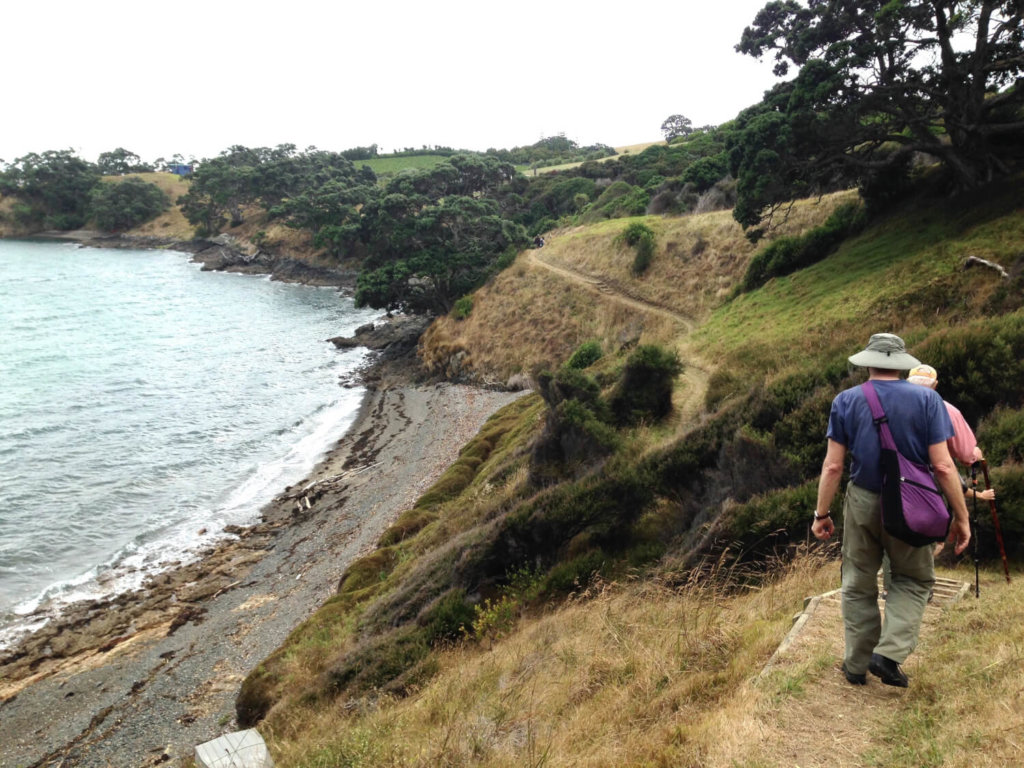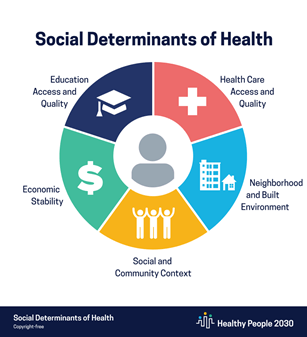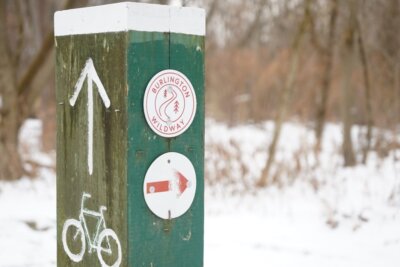Health Matters: Want to live longer? Take a walk

The 12-mile hike over the Tongariro volcano on New Zealand’s North Island has been called one of the 10 best day hikes in the world. The trail climbs up to a broad valley, the volcanic crater, then up to a high ridge. From here, Mt. Nguoruhoe (Mt. Doom to Lord of the Rings fans) occupies the foreground, and cloud-studded sky, shades-of-brown ridges and green valleys recede in all directions. Hikers on the trail below look like so many tiny hobbits. Emerald lakes lie to the west. The Red Crater, a scarlet-rimmed vertical vent on the side of a nearby mound, could be the nether opening of Mother Earth herself. To the enchanted hiker, puffing up the steep trail to the summit, the wondrous thought occurs: Thank God for legs.
Which is a good lead-in to the subject of this article. Want to live longer? Take a walk.
Walking is perhaps the simplest of exercises, requiring no training and no special facilities or equipment. Exercise and fitness experts recommend comfortable clothing and good, supportive footwear, but, face it, most of the people in the world walk barefoot or with flip flops. And while most don’t do it for recreation or fitness, doctors have long believed that those who walk regularly, for whatever reason, live longer and have fewer health problems than those who don’t. More than 2,400 years ago, Hippocrates, the father of modern medicine, said, “Walking is a man’s best medicine.”
And a woman’s, too. A long-term study of female graduates of Harvard nursing programs found that walking at least three hours a week was linked to a 35 percent lower risk of heart attack and cardiac death and a 34 percent lower risk of stroke. Among male health professionals, the benefits were more modest but still significant. Worldwide, a large review by an English group that analyzed 18 studies involving nearly 460,000 subjects found that walking as little as 5.5 miles a week at a leisurely pace of 2 mph reduced the risk of heart attack and death.
Walking helps with weight control. For the average male, walking consumes about 100 calories per mile. This may not seem like much given that a pound of fat contains about 4,000 calories, but studies have shown that those who walk regularly gain significantly less weight during middle age than those who don’t.
Compared with running, in which both feet are off the ground at some point in the stride, walking is a low-impact form of moderate exercise, much kinder to knees and back. Health professionals recommend at least 30 minutes of moderate exercise five days a week. These sessions may be split up into 10-minute blocks during the day. Like other forms of moderate exercise, walking helps control cardiac risk factors such as cholesterol, blood pressure, diabetes, obesity, vascular stiffness and inflammation, and mental stress. Studies have shown that exercise also protects against dementia, peripheral artery disease, depression, colon cancer and even erectile dysfunction.
Walking can become part of a normal daily routine if we decide to leave the car a little farther from the office or store or take the stairs instead of the elevator. Housework, particularly in a home with stairs, demands walking. Hobbies such as gardening, hunting, fishing and golf can include opportunities for walking.
Pedometers or Fitbits can show us how much we walk during the day. On average, there are 2,000 steps per mile. A brisk walking pace covers 100 steps per minute. A fast walk is 120 steps. A 30-minute walk that covers a mile and a half (3,000 steps) is a good goal for the aspiring walker. This is on level ground, of course. The exertion, hence the exercise value, of walking increases significantly with stairs or hills. Stair-climbing, for example, requires two to three times the caloric expenditure of walking. As for hill-climbing, the benefit to Charlotters from having Mt. Philo in our midst is clearly seen in the number of cars in the lower parking lot on most days.
We complete the circle by returning to New Zealand. Here is a country that takes walking seriously. According to a 2008 survey, more than two-thirds of New Zealanders over age 16 walk for sport or recreation. Fifty-two well-maintained walkways, crossing both public and private lands, are publicly supported, maintained and protected under the Walking Access Act of 2008. In addition, New Zealanders enjoy countless other rural and urban walkways, local bush and coastal tracks, and nature trails.
Doctors in New Zealand typically issue green prescriptions specifying exercise to treat a number of conditions. Prescriptions include support staff for help and encouragement. This national commitment to exercise in general and walking in particular may help explain how New Zealand achieves a higher life expectancy than the U.S. at a significantly lower cost.
Dr. Richard “Bunky” Bernstein is retired from the Charlotte Family Health Center and lives in North Ferrisburgh.
Related Stories
Popular Stories
If you enjoy The Charlotte News, please consider making a donation. Your gift will help us produce more stories like this. The majority of our budget comes from charitable contributions. Your gift helps sustain The Charlotte News, keeping it a free service for everyone in town. Thank you.
Andrew Zehner, Board Chair










